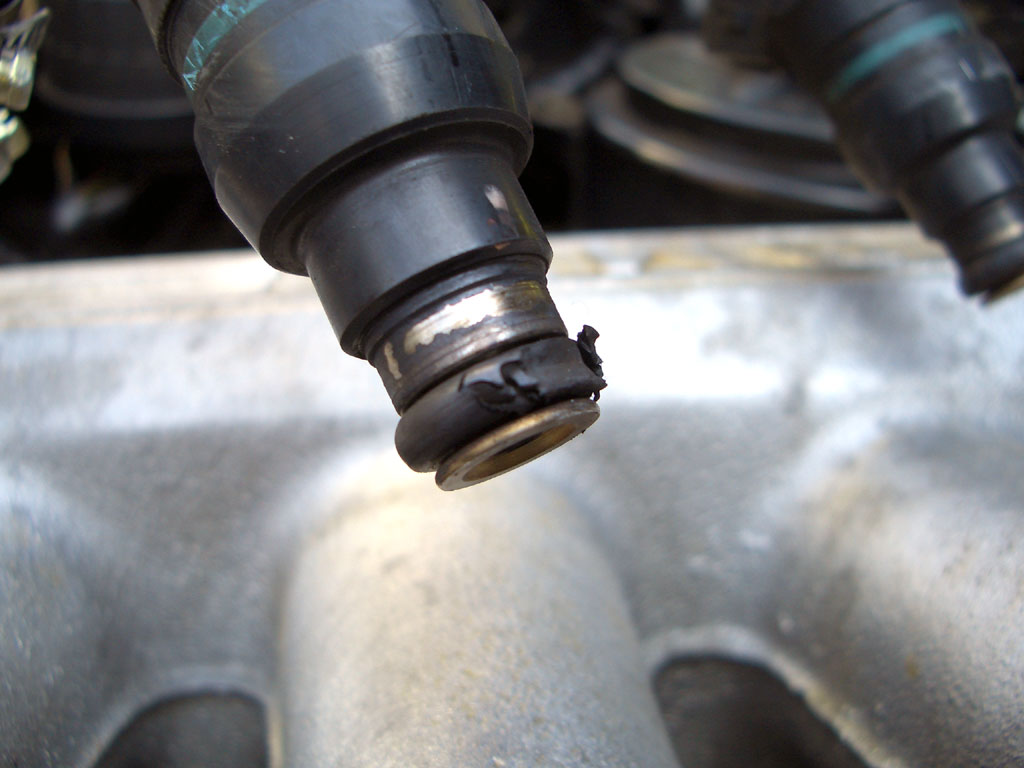After checking all the rubber hoses for leaks, and the intake gaskets etc.
etc. you may need to check the O-rings on the fuel injectors. This
shows the top of the injector. The solution is to replace the o-ring.

| Home | Diagnosis - Engine |
|---|
| Owners | Links | Model | Description | Language |
|---|---|---|---|---|
| E31 forum | E32: | ROUGH IDLE I have had my M70 for a bit over 2 years and in that time it has always had a rough idle and ran a little rich - noticeable difference between banks etc. ( tried to fix it - plugs, caps, rotors, coils, lifters, MAFs BUT NG) SOLUTION: its the DKs MAJOR gunk buildup around armature but more importantly the brushes that are supposed to contact the armature were not properly contacting the armature - the tracks that the brushes run in were full of gunk and crap from years of the brushes wearing on the armature PLUS the gears themselves were covered in gunk and crap - the factory grease had hardened and of course the throttles were hard to move and sticking at points |
English | |
| below | E32: | Rough Idle and Engine Shaking -- ultimate guide | English | |
| below | E32: | Rough Idle -- Air leak through a fuel injector O-ring: photo | English | |
| below | E32: | No power, not limp home: fuse #20 was blown | English | |
| below | E32: | Power only at full throttle, not limp home: lambda plugs crossed | English | |
| below | E32: | Engine will not start and OBC has no display | English | |
| below | E32: | Engine overheats | English |
| Rough Idle and Engine Shaking - the Ultimate Guide! |
|---|
|
| Rough Idle -- Air leak through a fuel injector O-ring |
|---|
|
| No power, but not limp home |
|---|
|
| Power only at full throttle |
|---|
|
| Engine will not start and the OBC display is off |
|---|
|
| Engine overheats |
|---|
There are many reasons for overheating so this entry will keep expanding but this is a good first step. |